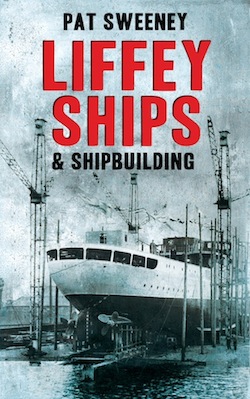Displaying items by tag: Ship building
Liffey Ship Building Story Brought to Life for First Time
To the vast majority of people, when shipbuilding in Ireland is mentioned, they think only of Belfast, the Harland & Wolff shipyard and the tragic maiden voyage of the Titanic in 1912.
However, there was a vibrant shipbuilding industry in Dublin for nearly two centuries and the story of the different shipyards, the ships they produced and the people who worked there is told here for the first time. Pat Sweeney provides a comprehensive examination of the origins and progress of shipbuilding and ship repair on the Liffey, and documents the progression of the shipbuilding industry in Dublin from its early days at the Walpole and Webb shipyard, through the boom periods of the First and Second World Wars, to the gradual decline of the industry in the late twentieth century.
Pat Sweeney was the Editor of the Maritime Institute of Ireland's journal for 22 years. He was also the only Dublin-based photographer for Lloyds List, London's premier shipping journal, and has contributed several articles on Irish and international shipping to the Irish Independent.

Liffey Ships & Shipbuilding is published in paperback at €19.99























































